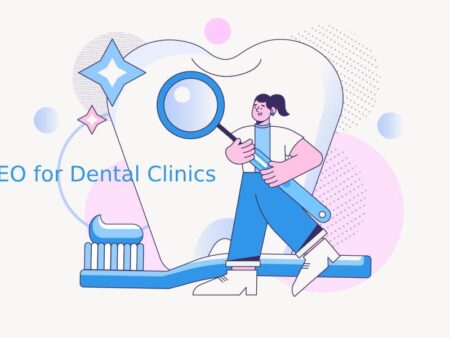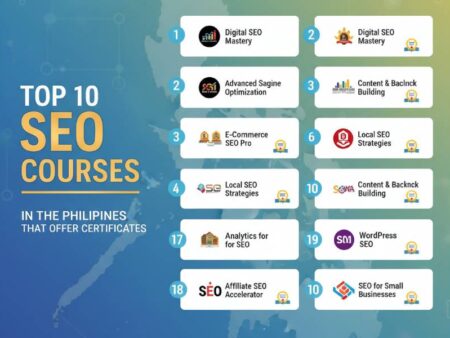
We boosted a SaaS client’s organic traffic by 312% using pure white-hat link-building. Through valuable content, personalized outreach, and digital PR, we earned high-quality backlinks and built lasting authority—no shady tricks, just real results. This sustainable approach led to better rankings, more traffic, and increased conversions over time.
Client Overview:
- Industry: SaaS (Project Management Tool)
- Company Size: Mid-size startup
- Target Audience: Small businesses, remote teams, and freelancers
- Goal: Increase organic traffic and improve rankings for high-conversion keywords without using black-hat or spammy tactics.
The Challenge
When the client approached us in Q1 of 2024, their organic growth had hit a plateau. They had been blogging regularly, optimizing for keywords, and even doing some outreach. But the results were minimal. They needed more than just blog content—they needed authority.
After an SEO audit, here’s what we found:
- Domain Rating (DR): 26
- Backlinks: 190 referring domains (only 35 were considered high-quality)
- Organic Traffic: ~3,800 monthly visitors
- Keyword Rankings: None in the top 10 for high-intent keywords
Most of their backlinks were from directories, outdated guest posts, and random sites with no topical relevance.
Strategy: White-Hat Link Building with a Real Human Touch
We didn’t want to play games with Google. No link farms, no PBNs, no shady exchanges.
Our white-hat strategy focused on 3 core pillars:
- Creating Link-Worthy Content
- Manual Outreach with Personalization
- Digital PR & Resource Page Link-Building
Let’s break these down.
1. Creating Link-Worthy Content
We started by developing a “link magnet” strategy, where the content itself becomes so valuable, others naturally want to link to it.
Content Types We Focused On:
- Ultimate Guides: In-depth tutorials on “How to Manage Remote Teams” and “Project Management for Freelancers.”
- Original Research: We surveyed 300+ remote workers and published a report on productivity habits.
- Infographics: Visual summaries of our long-form guides for easy sharing.
Why It Worked:
- The guides were over 3,000 words, packed with visuals and examples.
- The research was 100% original and cited by blogs in the same industry.
- We added custom-designed graphics to make our content stand out.
2. Manual Outreach With Personalization
We knew sending bulk emails wouldn’t cut it.
So we built a list of high-authority, relevant sites in the project management, SaaS, and productivity niches. Each email was personalized based on content, tone, and mutual interests.
Our Process:
- Used Ahrefs and BuzzSumo to find articles already linking to similar content
- Used Hunter.io to find valid email addresses
- Crafted personalized pitches like:
“Hey Sarah, I loved your article on managing remote workflows. I noticed you mentioned tools but didn’t go deep on scheduling features. We just published a data-backed guide on remote time-tracking that you might find valuable. Want to take a look?”
Results:
- Emails Sent: 325
- Reply Rate: 27.3%
- Links Earned: 72 quality backlinks over 90 days
- Topical Match: Over 80% of the links came from related content pages.
3. Digital PR & Resource Page Link Building
We took things a step further by getting the brand in front of journalists and curators.
What We Did:
- Submitted our remote work survey to HARO (Help A Reporter Out)
- Created a list of resource pages on remote work and productivity tools
- Reached out with this message:
“Hey there, I noticed your resource page on remote work tools. We just published a survey with surprising stats on how remote teams manage tasks. Would love to get it listed as a helpful resource for your readers.”
Results:
- Earned placements on university blogs, government portals, and SaaS resource pages
- Got featured on a major roundup blog post titled “25 Best Tools for Remote Collaboration.”
- Increased our referral traffic by 18% in 60 days from those resource pages.
Results After 6 Months
Here’s what happened after six months of implementing the white-hat strategy:
| Metric | Before | After (6 Months) | Growth |
| Domain Rating (DR) | 26 | 42 | +61.5% |
| Referring Domains | 190 | 414 | +117.9% |
| Organic Keywords | ~700 | 2,600+ | +271.4% |
| Monthly Traffic | ~3,800 | 15,650 | +312% |
| Page 1 Keywords | 6 | 43 | +616.6% |
Most important: The traffic increase was relevant and converting. Trial sign-ups doubled during this period.
Key Takeaways & What You Can Learn
Quality Over Quantity Wins
You don’t need thousands of backlinks. You need the right ones. A handful of links from trusted, relevant sources had more impact than 100 random ones.
Content is the Foundation
You can’t earn good links without something worth linking to. Content that solves a specific problem or presents original data is your best bet.
Outreach Needs to Be Human
We didn’t use templates for outreach. Every email felt personal. That’s why people replied.
Consistency is King
This wasn’t a one-week effort. We did 2–3 new pieces of content per month and ran outreach campaigns weekly. Compound effort = compound results.
Mistakes We Avoided
- No automated link-building software
- No comment spam or forum links
- No link exchanges or “I’ll link you if you link me” tricks
- No link buying
We played the long game—and it paid off.
What Tools Helped Us
Here are the actual tools we used during this campaign:
- Ahrefs: For competitor backlink analysis and opportunity discovery
- BuzzSumo: To find trending content and link-worthy topics
- Hunter.io: For email discovery
- Mailshake: For personalized outreach
- Canva: To design infographics and social media cards
- HARO: For PR link-building
The Bottom Line
White-hat link building is not dead.
It’s not fast. It’s not easy. But it’s sustainable, Google-friendly, and drives real results.
In this case study, we didn’t just increase traffic—we helped a brand grow its authority in a competitive space, and the results are still compounding today.
Whether you’re in SaaS, eCommerce, or affiliate marketing, if you’re willing to invest in high-value content and authentic relationships, white-hat link-building can be your competitive edge.
Want These Results? Here’s a 5-Step Action Plan
If you’re inspired and want to start applying these tactics, here’s a simplified 5-step roadmap:
- Audit your content and identify link-worthy pieces—or create new ones.
- Use Ahrefs to find similar pages with backlinks.
- Make a list of outreach targets and find the right contact emails.
- Personalize your outreach—one human to another.
- Track your progress weekly and stay consistent.
Rinse and repeat.
Conclusion
The success of this white-hat campaign proves one important point: sustainable SEO growth comes from trust and value, not tricks. Want to win Google’s game? Start by earning trust, not just rankings.
Frequently Asked Questions (FAQ)
What is white-hat link-building?
White-hat link-building is the process of earning backlinks ethically, through valuable content, genuine outreach, and relationship-building, following Google’s guidelines without using manipulative or spammy tactics.
Why is white-hat link-building better than black-hat link-building?
White-hat is safer and sustainable. Unlike black-hat tactics, it won’t get you penalized by Google and builds long-term authority and trust for your website.
How long does white-hat link-building take to show results?
Usually 3 to 6 months. It’s not instant, but the results last longer and improve steadily over time with consistent effort and high-quality links.
What kind of content attracts white-hat backlinks?
Original research, how-to guides, infographics, and expert roundups work great. Anything truly helpful, well-designed, or unique tends to earn natural backlinks from relevant websites.
Do I need fancy tools for white-hat link-building?
Not really. Tools like Ahrefs or Hunter help, but great content and personalized outreach are more important. You can start small and scale as you grow.
What Are You Waiting, Enroll Now!
Contact Us!Subscribe to this Page
Average rating 5 / 5. Vote count: 305
Share on Social Media
Related Posts
- Best Ways to Get Backlinks for Your Website
- Website Ranking vs. Traffic: Which Should You Focus On?
- Spun Content Detection Algorithms and Google's NLP Models
- Link Juice Hijacking: The Abuse of Expired Domains and Redirected Links
- How to Use HARO (Help a Reporter Out) for Backlinks: A Complete Guide








